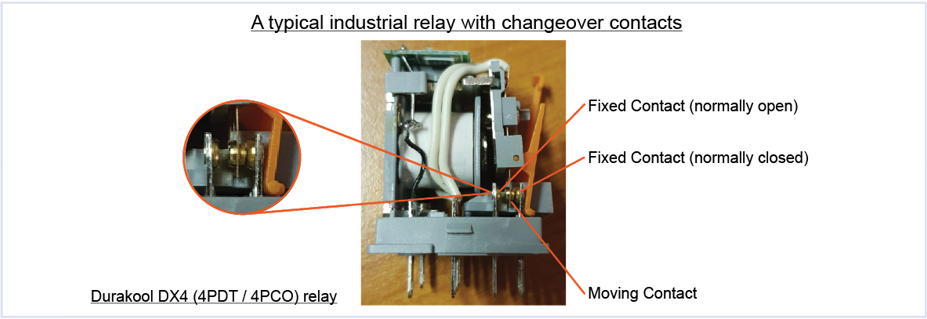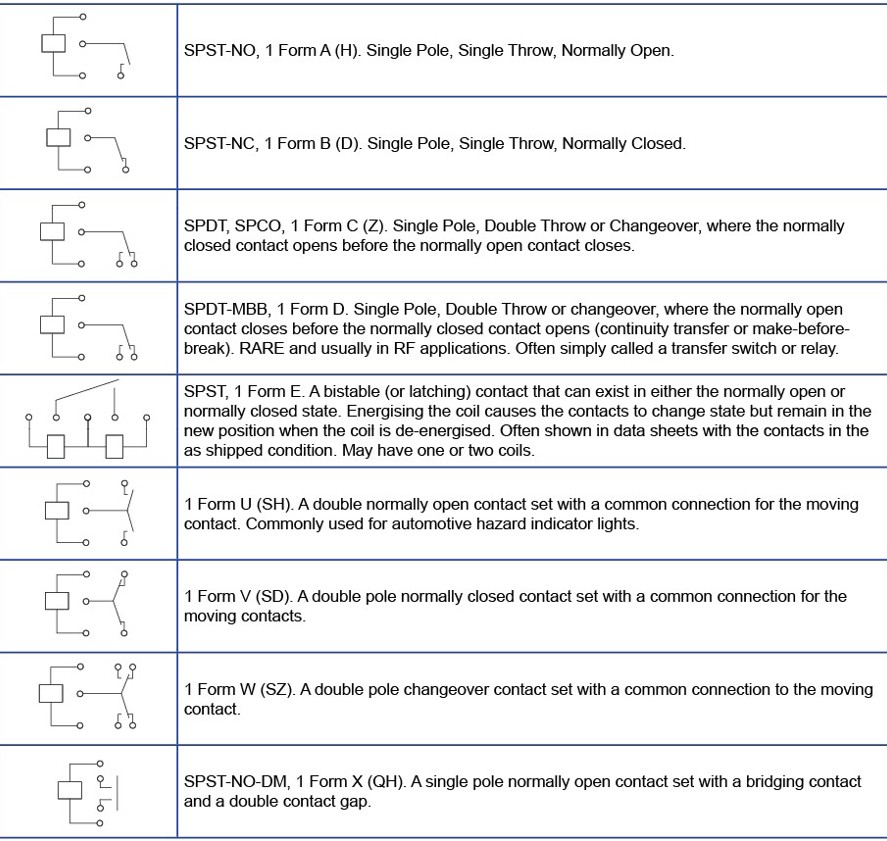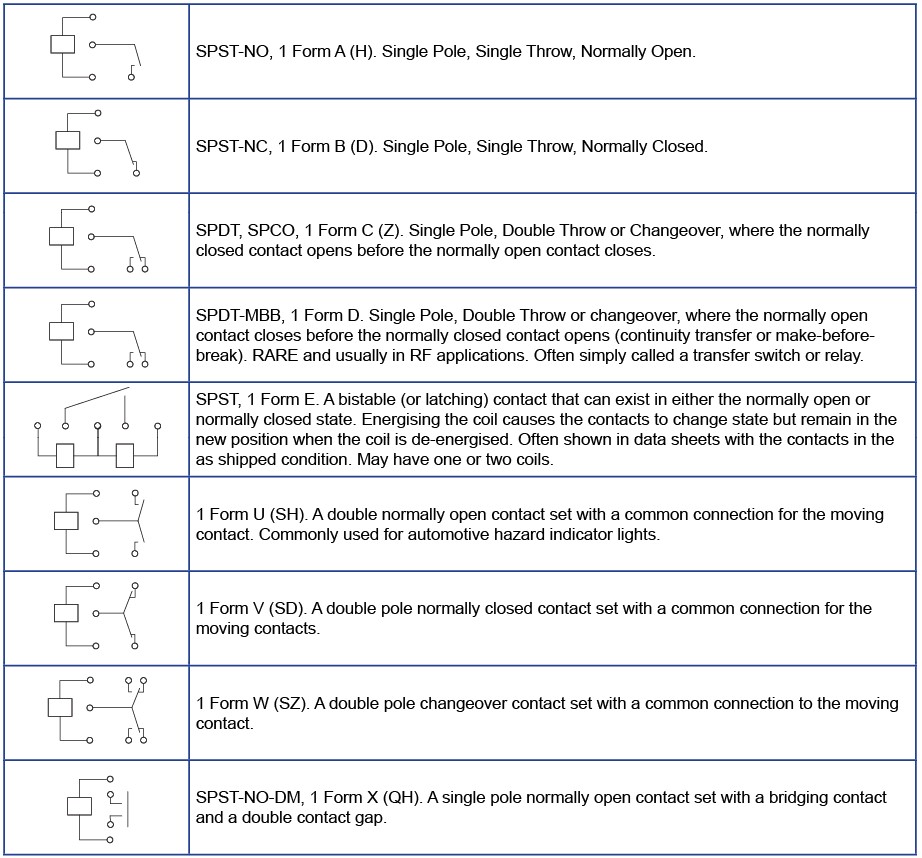Over many years, different short forms describing contact arrangements used by switches, relays and contactors have evolved. Listed below are a number of the most common variants. Reference to the diagrams below will assist with understanding the various contact arrangements (contact forms).
In the table, we show the short form for a single contact set; a single set of contacts is called 'a pole'. Multiple contact sets, that all switch at the same time, are described with a number, e.g., 3 sets of independent parallel contacts are described as 3 pole. Likewise, two sets of contacts are called Double Pole. These are abbreviated as SP, DP (and occasionally as 2P or 3P) etc.
Next, we have the action of the contacts themselves. When a single pole relay has two contacts, one fixed and one moving, which close or open when the coil is energised, it is called a single throw (abbreviated as 'ST'). So, a relay with a single set of contacts, which either open or close, is called a SPST (or single pole, single throw) relay. This does not tell us the state of the relay contacts when the coil is not energised, although it is not uncommon to refer to a relay with contacts that are normally open, when the coil is not energised, as SPST (or DPST etc.). To be accurate we need to add the contact state, so a relay with a single set of contacts which are normally open (i.e., not conducting) when the coil is not energised, is called a single pole, single throw, normally open relay (or SPST-NO). Likewise, if the contacts are normally closed (i.e., conducting when the coil is not energised), then it is an SPST-NC relay.
What happens when we have two fixed contacts and a moving contact? This is where, when the coil is not energised, the moving contact is at rest against the normally closed contact. When the coil is energised, the moving contact moves to rest against the normally open contact. This motion is called a double throw (DT) or perhaps more sensibly described as a Changeover. The abbreviations become SPDT (or DPDT etc.) or, SPCO (or DPCO etc.). Both 'DT' and 'CO' are in common use.

Usually, the normally closed contact opens before the normally open contact closes, i.e., at the point of movement, no contacts are connected. Rarely, there are contact sets where continuity is maintained throughout the movement, with the normally closed contact only opening AFTER the normally open contact has closed. This is called Make-Before-Break and is usually found in RF applications.
Some power relays and contactors have two fixed contacts and a moving bar, which bridges the gap between the two fixed contacts to complete the circuit. This could be described as a SPST-NO contact, though this configuration is commonly referred to as SPST-NO-DM (or SPST-DM), where the DM means Double Make i.e., two contacts make a simultaneous connection when the bar touches the two fixed contacts.
The above are the most common contact configurations, but there are others, especially in the automotive industry.
Another way of describing contact configurations, originating from reed relays is also used. For example, an SPST-NO configuration is called '1 Form A' (or 1 Form H in China,), an SPST-NC configuration is '1 Form B' (1 Form D in China), and an SPDT configuration becomes '1 Form C' (1 Form Z in China).
Further variations can occur when there are two relays in a single package. They may be fully independent, but occasionally, like our Durakool DG08 relay, there can be interconnections between the two contact sets. These are often found in reversing applications, in particular. The DG08 is commonly used for electric power window motors in vehicles, for example. Other variations can occur when a relay or contactor has an auxiliary contact set, which is used to monitor the position of the power contact(s), in case of contact welding etc. In this example, it is usual to refer to the second set with a '+' symbol. e.g., DPST-NO-DM + SPST-NC, which describes a power relay with two sets of normally open power contacts and a normally closed auxiliary contact. The auxiliary contact may be directly linked to the armature that moves the power contacts (like our Durakool DE35G), or it may be a separate micro-switch (usual with contactors), which is operated by an actuator arm from the moving contact bar.
Contact Forms


Download Pdf


